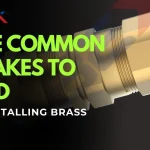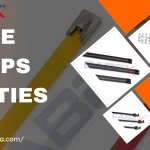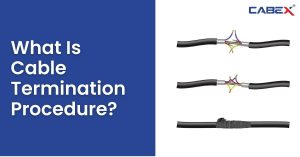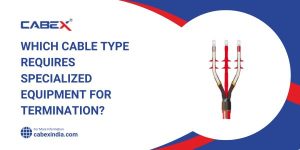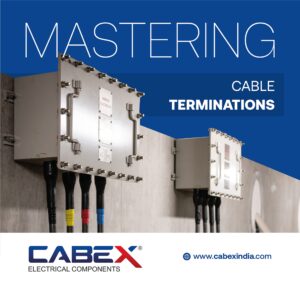In the realm of electrical engineering, 5 Types of Electrical Terminations play a pivotal role. These are crucial points where electrical conductors meet and form connections, ensuring the efficient and safe transmission of electrical power or signals. Understanding the different types of electrical terminations is essential for any electrical professional or enthusiast. In this comprehensive guide, we will explore five distinct types of electrical terminations, delving into their unique features, applications, and advantages.
⚠️ Don’t Compromise on Safety! Get Certified Explosion Proof Cable Glands Now! ⚠️
In critical industrial zones, a faulty cable gland can lead to disastrous failures. Protect your assets, personnel, and compliance with our trusted, certified explosion-proof cable glands.
- ⚡️ Instant protection against fire, dust, and moisture
- ✅ Certified by ATEX, IECEx, and PESO for global standards
- 🛠️ Engineered for the toughest industrial environments
- 🚀 Limited stock! Ensure your safety today and avoid downtime
🎯 Act Now! Click below to secure the safest cable glands for your project BEFORE it’s too late:
👉 Get Explosion Proof Cable Glands
👉 See Industrial Cable Glands
👉 Explore Comprehensive Explosion Protection
📘 Overview Table
| Termination Type | Best Use Case | Strengths | Limitations |
|---|---|---|---|
| Soldered | PCBs, electronics | Excellent conductivity, low resistance | Time-consuming, heat-sensitive |
| Crimped | Automotive, aerospace, power | Strong, vibration-resistant | Needs tools, hard to inspect |
| Compression | Substations, high-voltage setups | Reusable, high current | Time-intensive, needs precision |
| Wire Wrap | Prototyping, breadboards | No heat needed, reusable | Low current capacity |
| IDT | Telecom, data cabling | Fast, no insulation stripping | Not ideal for thick/stranded wires |
5 Types of Electrical Terminations
1. Soldered Terminations
Soldered terminations represent a classic and reliable method of creating electrical connections. This technique involves melting a filler metal, known as solder, and applying it to the joint between two conductors. As the solder cools and solidifies, it creates a secure and durable bond, facilitating the smooth flow of electricity.
These terminations are commonly used in various applications, including electronics assembly, printed circuit board (PCB) construction, and small-scale electrical projects. The process of soldering demands precision and skill, as improper technique or low-quality solder can lead to weak joints or even electrical failures.
Advantages of Soldered Terminations:
- Excellent electrical conductivity due to the direct metal-to-metal contact.
- Low resistance, minimizing the risk of power loss or heat generation.
- Suitable for intricate and compact circuit designs.
- Provides mechanical strength to the joint.
Disadvantages of Soldered Terminations:
- Can be time-consuming, especially in mass production scenarios.
- Vulnerable to thermal stress, which might cause solder joints to crack or weaken over time.
- Not ideal for high-current applications.
2. Crimped Terminations
Crimped terminations offer a robust and efficient method for connecting conductors. This technique involves using a crimping tool to compress a metal sleeve or ferrule around the conductor and secure it tightly. The compression creates a gas-tight and electrically conductive joint that resists pull-out forces, making it suitable for applications requiring mechanical strength.
These terminations find extensive use in power distribution systems, aerospace applications, and automotive wiring harnesses. To achieve optimum results, it is crucial to select the appropriate crimping tool and terminals for the specific conductor and application.
Advantages of Crimped Terminations:
- High mechanical strength and resistance to vibrations and movements.
- Quick and repeatable process, ideal for high-volume production.
- Gas-tight connection prevents oxidation and ensures long-term reliability.
- Suitable for a wide range of conductor sizes and materials.
Disadvantages of Crimped Terminations:
- Requires specialized crimping tools for each terminal type.
- Inadequate crimping can lead to poor conductivity and potential electrical issues.
- Difficult to inspect the quality of the crimp post-termination.
3. Compression Terminations
Compression terminations, as the name suggests, rely on compressive forces to establish secure connections. These terminations often utilize mechanical connectors with bolts or setscrews to apply pressure on the conductors. The pressure forces the conductive materials together, creating an intimate and reliable contact interface.
These terminations find extensive use in high-power applications, electrical substations, and industrial installations. It is essential to use appropriate torque values when tightening the connectors to ensure optimal performance and longevity.
Advantages of Compression Terminations:
- Well-suited for high-current and high-voltage applications.
- Minimal resistance and excellent conductivity.
- Resistant to thermal cycling and environmental exposure.
- Reusable and allows for easy disconnection and retermination.
Disadvantages of Compression Terminations:
- Time-consuming, particularly when dealing with multiple conductors.
- Susceptible to loosening if not properly torqued.
- Requires skillful installation to avoid conductor damage.
4. Wire Wrap Terminations
Wire wrap terminations provide a unique and reliable method for creating connections on a variety of electronic components, such as integrated circuits and connectors. This technique involves precisely wrapping a thin, solid wire around a conductive pin or post, securing it in place. The sharp edges of the wrapping tool penetrate the wire’s insulation, establishing a gas-tight connection.
These terminations are prevalent in prototyping and breadboarding activities, enabling engineers and hobbyists to create temporary connections without soldering. However, they are not recommended for high-current applications due to their limited current-carrying capacity.
Advantages of Wire Wrap Terminations:
- Ideal for rapid prototyping and experimentation.
- No need for additional heat or specialized equipment.
- Offers good mechanical strength for small-scale projects.
- Easy to remove and modify connections as needed.
Disadvantages of Wire Wrap Terminations:
- Limited current-carrying capacity, unsuitable for high-power applications.
- Prone to potential signal degradation and impedance issues.
- Requires precision and practice to achieve reliable connections.
5. Insulation Displacement Terminations (IDTs)
Insulation Displacement Terminations (IDTs) present a convenient and efficient way to terminate conductors without the need for stripping insulation. These terminations typically consist of a connector with sharp blades or teeth that pierce the insulation when the conductor is inserted, making direct contact with the conductor’s core.
IDTs are commonly used in telecommunications, data cabling, and domestic electrical installations. They offer a time-saving alternative to traditional methods of stripping insulation before termination.
Advantages of Insulation Displacement Terminations:
- Quick and easy installation process.
- Eliminates the need for stripping insulation, reducing the risk of accidental damage to conductors.
- Suitable for mass termination applications.
- Maintains a gas-tight seal around the conductor.
Disadvantages of Insulation Displacement Terminations:
- Potential signal attenuation due to the disruption of the conductor’s insulation.
- Less suitable for stranded conductors or those with thicker insulation.
- May require higher insertion forces for thicker conductors.
Conclusion
Understanding the 5 Types of Electrical Terminations is crucial for electrical professionals in industrial, electronics manufacturing, and household projects. Each termination type comes with its unique strengths and weaknesses, making it crucial to select the most appropriate method based on the specific application’s requirements.
From the classic and reliable soldered terminations to the efficient and time-saving insulation displacement terminations, each technique serves a valuable purpose in the world of electrical connections. By comprehending their principles and applications, engineers can ensure the safe and efficient transmission of electrical power and signals in various domains, contributing to the advancement of technology and electrical engineering as a whole.
FAQ:
The main types of electrical terminations include soldered, crimped, compression, wire wrap, and insulation displacement terminations, each offering distinct methods for creating secure connections in electrical circuits.
An electrical termination diagram is a schematic representation of electrical connections and terminations in a system. It illustrates how conductors, cables, or wires are linked and terminated to ensure proper functionality and safety.
Termination in PCB refers to the process of connecting electrical components and conductors to the printed circuit board. It ensures secure and reliable connections, allowing for the efficient transmission of electrical signals.
Series termination involves placing a resistor in series with the transmission line to match its characteristic impedance, reducing signal reflections. Parallel termination uses a resistor connected in parallel to eliminate reflections.




